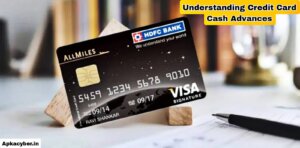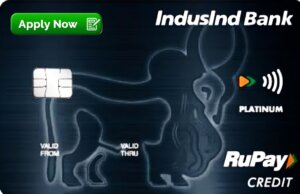
Credit cards are a widely used financial tool that allows consumers to borrow money for purchases and pay it back over time. While most people associate credit cards with buying goods and services, they also come with another feature known as a cash advance. A cash advance allows cardholders to withdraw cash using their credit card, either through an ATM, a bank, or by writing a credit card convenience check. Although it might seem like a convenient option in times of financial need, cash advances come with several downsides and should be approached with caution.
This essay explores what a cash advance is, how it works, the typical fees and interest rates involved, the risks and benefits, and alternative options that might be more financially sound.
- Kotak Neo: A Complete Guide
- INDmoney: A Deep Dive into India’s All-in-One Financial Super App
- Supermoney Upi App Reward
- CoinDCX: India’s Leading Crypto Exchange
Understanding Cash Advances
Definition
A cash advance is a service provided by credit card issuers that allows cardholders to withdraw cash, up to a certain limit, using their credit card account. Instead of purchasing items directly, like in a standard credit card transaction, the cardholder receives cash, which they can use as they see fit. This is essentially borrowing money against the cardholder’s line of credit.
The process is relatively simple: the cardholder can either withdraw funds from an ATM using their credit card PIN, request cash directly from a bank or financial institution, or use a special check linked to their credit card account. While this may appear convenient in emergencies, the structure of cash advances is typically less favorable compared to regular credit card purchases.
How Does a Cash Advance Work?
A cash advance works by allowing the cardholder to access a portion of their credit limit in the form of cash. Each credit card has two different limits: a total credit limit and a cash advance limit, which is typically lower. For instance, if your credit limit is $5,000, your cash advance limit might only be $1,000.
To obtain a cash advance, there are several methods:
-
ATM Withdrawal: You can insert your credit card into an ATM, enter your PIN, and withdraw cash, just as you would with a debit card. However, instead of taking money from a bank account, you’re borrowing from your credit line.
-
Bank Withdrawal: You can go to a bank branch and request a cash advance in person. You’ll need to show identification and your credit card.
-
Convenience Checks: Some credit card companies send checks that are tied to your credit card account. Writing one of these checks is the same as taking a cash advance. These can be used to deposit into a bank account or pay off debts.
Although these methods are straightforward, the fees and interest charges associated with cash advances can add up quickly, making them an expensive way to borrow money.
Fees Associated with Cash Advances
One of the biggest drawbacks of cash advances is the cost. Several types of fees can be charged when you take a cash advance:
1. Cash Advance Fee
This is a fee specifically for using the cash advance feature. It’s typically a percentage of the amount borrowed, often ranging between 3% to 5%, with a minimum flat fee (e.g., $10). For example, if you withdraw $500, and your card has a 5% cash advance fee, you would immediately owe $25 in fees on top of the $500.
2. ATM or Bank Fees
When you use an ATM to get a cash advance, the ATM provider may also charge a fee. Additionally, if you obtain the advance from a bank that isn’t affiliated with your credit card, that institution may impose its own charges.
3. High Interest Rates
Cash advances generally carry higher interest rates than regular credit card purchases. While a standard purchase might have an interest rate of 15% APR, a cash advance could have an APR of 25% or higher. This makes the cost of borrowing money through a cash advance significantly more expensive.
4. No Grace Period
Unlike regular purchases, cash advances usually start accruing interest immediately—there is no grace period. This means that interest charges begin the moment you receive the cash. Even if you pay off your statement in full, the interest on the cash advance will still apply.
Example Scenario
Let’s imagine a situation where someone uses their credit card to withdraw $1,000 as a cash advance. The credit card charges a 5% cash advance fee and a 25% APR with no grace period.
-
Cash advance fee: $1,000 × 5% = $50
-
Interest: $1,000 × 25% annual rate = about $20.83/month
-
Total cost in one month: $50 (fee) + $20.83 (interest) = $70.83
So, even if the person pays off the advance in just one month, they’re already paying over 7% of the amount borrowed in fees and interest.
Pros of Cash Advances
Despite the high costs, there are a few situations where a cash advance might be useful or necessary. Here are some potential benefits:
1. Immediate Access to Cash
In emergencies where you need cash quickly and have no other access to funds, a cash advance can provide immediate relief.
2. No Credit Check Required
Since you’re borrowing against your existing credit line, you don’t need to go through an application process or get approval for a new loan. This makes it faster and more accessible.
3. Available Anytime
Cash advances can be accessed 24/7 at ATMs worldwide, which is helpful in situations where other financial services are unavailable.
Risks and Drawbacks
Even though cash advances can be convenient, they are often a costly and risky financial move. Here are some of the main disadvantages:
1. High Interest Costs
Cash advances are among the most expensive forms of borrowing available through a credit card. The high interest rates combined with the lack of a grace period make them very costly, especially if you don’t pay them off quickly.
2. Negative Impact on Credit Score
Taking a cash advance doesn’t directly affect your credit score, but it can have indirect consequences. For example, if the cash advance increases your credit utilization ratio (how much of your credit limit you’re using), your score could drop.
3. Encourages Debt Accumulation
Because cash is easy to use and doesn’t come with the psychological barrier of making a purchase, people may be more likely to overspend or use the money irresponsibly, increasing debt levels.
4. Not Eligible for Rewards
Most credit cards offer rewards like cashback or points for purchases. However, cash advances do not earn rewards, making them a less attractive use of your credit.
5. Potential for Financial Spiral
If someone regularly relies on cash advances to make ends meet, this could signal a deeper financial problem. Over time, the fees and interest can compound, leading to a debt spiral that’s hard to escape from.

Alternatives to Cash Advances
Before resorting to a cash advance, it’s worth considering other, less expensive options. Here are some alternatives:
1. Personal Loans
A personal loan from a bank or credit union often comes with lower interest rates than cash advances and can be repaid over a fixed term. They also typically have lower fees and more predictable payment structures.
2. Borrowing from Friends or Family
Though it can be uncomfortable, borrowing from someone you trust may be a better short-term option than paying the high fees associated with a cash advance.
3. Overdraft Protection
Some banks offer overdraft protection on checking accounts, which allows you to temporarily spend more than you have in your account for a small fee or interest rate. This might be cheaper than a cash advance.
4. Credit Card Balance Transfer
In some cases, a 0% APR balance transfer offer could help pay down debt more effectively than a cash advance, provided you can use it to move high-interest debt to a card with lower or no interest for a limited time.
5. Payday Alternatives
Some credit unions offer payday alternative loans (PALs), which are short-term loans with more reasonable interest rates and terms than payday loans or cash advances.
Tips for Managing Cash Advances
If you find yourself needing a cash advance, there are strategies to minimize its financial impact:
-
Borrow the smallest amount possible to meet your needs.
-
Pay it back as quickly as you can to reduce interest accumulation.
-
Avoid repeated usage, which can signal poor financial habits.
-
Understand your credit card’s terms, including the cash advance APR and fees.
-
Keep track of your balance to avoid going over your credit limit, which can incur additional penalties.

Conclusion
A cash advance on a credit card is a feature that offers quick access to cash by borrowing against your credit limit. While it can be a lifeline in emergencies, it’s one of the most expensive ways to borrow money due to high fees, high interest rates, and the lack of a grace period. Understanding the terms and risks associated with cash advances is essential before using this option.
If you’re in a tight financial situation, consider alternative methods such as personal loans, asking for help from trusted people, or exploring other financial products. And if you must take a cash advance, do so cautiously and responsibly, aiming to repay the borrowed amount as soon as possible to minimize the cost.
Ultimately, while cash advances are a feature of modern credit cards, they are best used as a last resort—not a regular financial strategy.